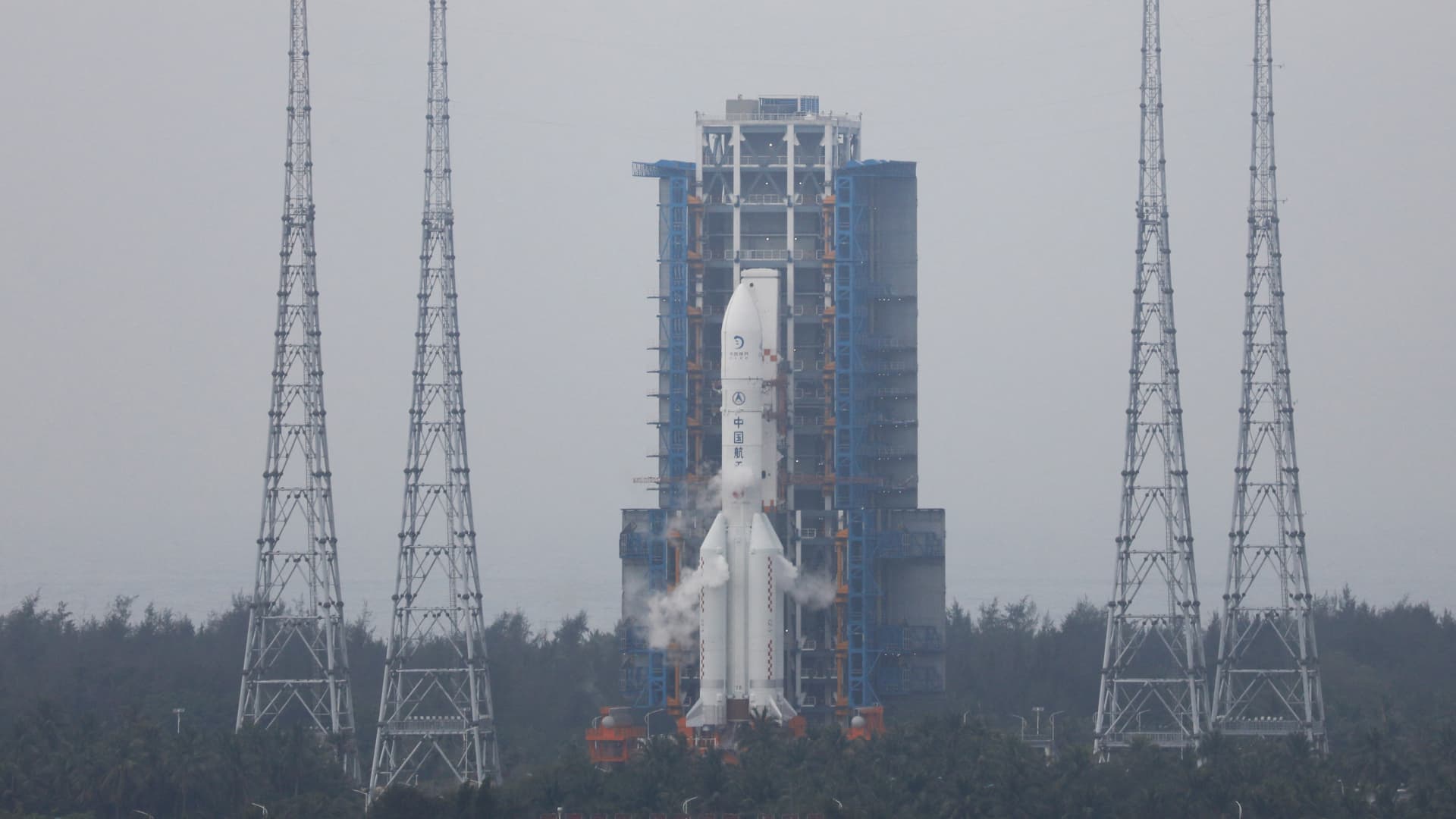The Chang’e 6 lunar probe and the Long March-5 Y8 carrier rocket combination sit atop the launch pad at the Wenchang Space Launch Site in Hainan province, China May 3, 2024.
Eduardo Baptista | Reuters
China on Tuesday launched its first batch of internet satellites that will form part of a constellation it hopes will rival SpaceX’s Starlink.
Known as “Thousand Sails,” the constellation is a low-Earth orbit set of more than 15,000 satellites that China has said will create global internet coverage.
A Long March 6A carrier rocket took off from the Taiyuan launch center in the northern Shanxi province of China to deliver the initial 18 satellites into space, according to the Chinese Academy of Sciences, which called the mission a complete success.
By 2025, China is aiming to deploy 648 satellites in the first phase of the constellation’s buildout, in order to create an internet network with global coverage, according to state media CCTV.
China’s constellation is known as a low-Earth orbit — or LEO — set of satellites that aim to provide internet coverage. Two high-profile names in the space are Starlink, developed by Elon Musk’s SpaceX, and OneWeb which is owned by European firm Eutelsat.
The launch of an internet constellation underscores China’s big space ambitions and Beijing’s bid to dislodge the U.S. dominance in the sector, as the technology battle between the two nations expands.
In 2020, China completed the BeiDou network — a set of satellites forming a global navigation system to rival the U.S. government-owned Global Positioning System (GPS), which is widely-used across the world.
In June this year, China Chang’e-6 lunar probe returned to Earth on Tuesday, bringing back the first-ever samples from the unexplored far side of the moon. Beijing has also laid out plans to send its first crewed mission to Mars in 2033.
